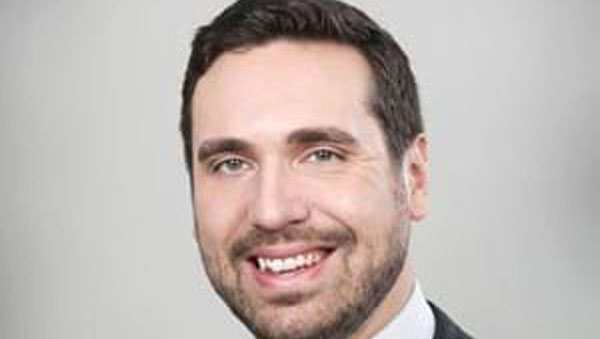By Yvonne Sam
Social and Political Commentator
 In a recent public lecture in London, England, Professor Jo Delahunty, QC, one of Britain’s top leading barristers, propounded that there was extensive complacency regarding the pervasiveness of inappropriate behavior in chambers and even by judges in courts.
In a recent public lecture in London, England, Professor Jo Delahunty, QC, one of Britain’s top leading barristers, propounded that there was extensive complacency regarding the pervasiveness of inappropriate behavior in chambers and even by judges in courts.
Delahunty, who specializes in family law, said that from her arrival in 1986, as a blue-eyed, blond-haired pupil, she was the victim of sexual harassment. There were wolf whistles and name calling.
While on a case with a lawyer, 30 years older than herself, on checking in at the hotel, she discovered that he had reserved a double room. She further claims that she was forced to immediately calculate, if objection would cause her career to be damaged. She then told the receptionist that there had been a mistake and insisted on having separate rooms. Nonetheless, the senior lawyer barged into her room, early every morning, while she was still in nightwear.
“I was a young pupil in the presence of men, who thought they might ‘have a try’,” she said.
As she progressed through the ranks of the bar, Q.C. Delahunty, who is now a professor of law, thought it was merely a problem of the past.
“I was wrong,” she said. “It still goes on, much in the same way as I experienced it, and it is now – as it was then – dealt with alone or with the support of friends and family.”
According to another senior barrister, young lawyers and pupils fear that their career would be damaged if they speak out, hence the lack of reporting at the Bar. Still there are others, who have reported that the issue is not a snowflake matter, and that complaints, if made, are by very few individuals. Younger barristers often felt “belittled” by judges. “If the judge was taking it out on you, that’s not acceptable.”
It was suggested, that anonymous reporting apps that highlighted where multiple complaints had been made, against specific individuals, would help identify some of the worst offenders.
The year 2018 heralded a groundbreaking change in the enthusiasm of women to openly speak out about sexual abuse, suffered in the workplace, and the willingness of others to both ear and act on it. Additionally in Britain 2018 also saw the creation of a #MeTooMovement called “Behind the Gown”, started by a group of barristers devoted to tackling sexual harassment at the Bar.
Motivated by the #MeToo movement that emanated following allegations of sexual abuse by the U. S film producer, Harvey Weinstein, “Behind the Gown” aims to highlight harassment at the Bar.
Closer home, but on the same playing field, on October 11, 2018, the President of the Quebec Bar ( Le Barreau du Quebec), Paul Mathieu Grondin, announced to Quebec’s 27,000 lawyers and articling students, the launching, by his organization, of a survey into sexual harassment. The Bar president hopes that the survey will provide factual evidence about the nature and scope of the problem.
According to Grondin, most lawyers have likely heard rumours and innuendo about cases of sexual harassment within the legal profession, hence the Bar intends to proceed thus, “We want to first establish if, when and where incidents occur and how prevalent they are; once we know what we’re dealing with, we can consider solutions.”
Articling students and members of the Quebec Bar are being invited to log on to a secure website and complete a lengthy questionnaire on the issue of sexual harassment. This questionnaire was developed and designed by Isabelle Auclair, an anthropologist at University Laval in Quebec City.
Auclair asserts that the survey is similar to one developed and used by universities, for dealing with sexual violence on campus, and involves 13 sections that deal with everything from the description of incidents and the personal, professional and social consequences for victims to the actions they took to report and/or deal with incidents and the results of those actions.
The survey asks what Grondin calls “a lot of very precise and tough questions” on the kinds and frequency of sexual harassment that lawyers may have witnessed or been victims of in the workplace, and the times and places where those incidents occurred.
“We want information, not names. We really want this to be confidential,” he affirms.
According to Grondin, of the Quebec Bar, there is no deadline for lawyers to respond to the questionnaire. However, he has clearly indicated that by next spring, he expects to receive a final report.
“At that point, we can start to consider solutions to problems that have been evaluated and identified,” he noted.
It would certainly be fortuitous if some degree of expediency was instituted vis-a-vis the institution of a stated deadline for questionnaire completion. Additionally, there has been no mention made, as to whether or not the public would be privy to the survey findings.
In early 2017 following the residuum of the Ghomeshi trial, the Quebec Bar created a working group, tasked with considering the treatment by police and the justice system, regarding sexual assault complaints. The completion of the work gave rise to seven best-practice recommendations, including the implementation of a collaborative “Philadelphia model” for handling complaints, and specific training for the cross-examination of vulnerable people, including victims of sexual assault. In late 2017, the Quebec Bar released recommendations on how the courts should deal with sexual assaults.
Canada is covered by a patchwork of sexual harassment rules and regulations, involving a blend of human rights codes and occupational health and safety laws, as well as the 1989 Supreme Court of Canada sexual harassment ruling in Janzen v. Platy Enterprises Ltd. Nonetheless, provinces continue to tinker with their legislation.
A labour lawyer and partner, in a well-known Montreal law firm, hails the Bar’s new survey as a welcome advancement for Quebec’s legal profession. “The issue of sexual harassment is not very well documented here,” says Marian Plamondon. “There are no statistics on it.”
However, even in the absence of data, the legal profession is certainly not immune to the problems that have shaken the entertainment and media industries, since the advent of the #MeToo movement.
“It’s not easy for a young lawyer to make a complaint when something happens,” says Plamondon. “They’re afraid for their career.”
In conclusion, the year 2017 will go down in the annals of history, as the year the scales fell off the eyes of the public, and the extent of sexual harassment came to the fore. It should therefore be no surprise that sexual harassment affects members of the Bar too.
In a University of Miami Law School Institutional Repository, entitled Sexual Harassment by Judges, the author, Marina Angel, clearly outlines case after case of sexual harassment by Judges towards female lawyers.
While the stated cases gave some idea of the problem, they failed to reflect its magnitude. Very few victims of sexual harassment file formal charges, and complaints in disciplinary cases against judges are usually confidential.
Our judicial system should be free of sexual harassment, although it is fair to assume that what goes on in the courtyard, may also be taking place in the court. Let us hope the tide is either turning or ebbing.
We need, however, to view the problem and its magnitude, not in a manner of appearing to demonize any of the honorable men who occupy the hallowed chambers, but as one geared towards maintaining awareness of workplace sexual transgressions and its accompanying deleterious effects.
Notwithstanding, the self-employed status of barristers and the continued reliance on their senior colleagues to advance their careers, certainly make them vulnerable to exploitation. However its culture on sexual harassment and bullying must change. It is apparent that sexual harassment at the Bar is ‘rife’, and the profession’s response thus far has been counter-productive.
The facts are clear: the sincere hope is that responses to the Bar’s questionnaire will send a clear message that sexual harassment in the judicial system, if present, must end. Representatives of the law should have no visible flaws.
Yvonne Sam, a retired Head Nurse and Secondary School Teacher, is Vice-president of the Guyana Cultural Association of Montreal. A regular columnist for over two decades with the Montreal Community Contact, her insightful and incursive articles on topics ranging from politics, human rights and immigration, to education and parenting have also appeared in the Huffington Post, Montreal Gazette, XPressbogg and Guyanese OnLine. She is also the recipient of the Governor General of Canada Caring Canadian Citizen Award.
 Pride News Canada's Leader In African Canadian & Caribbean News, Views & Lifestyle
Pride News Canada's Leader In African Canadian & Caribbean News, Views & Lifestyle





